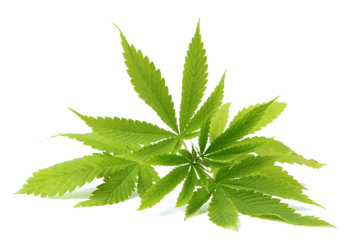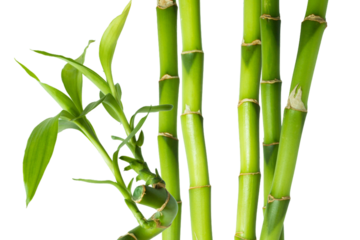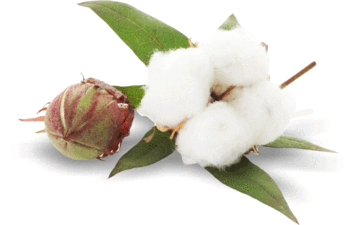Choisir des tissus écoresponsables, c'est être conscient du chemin parcouru de la fibre, sa cultivation, son traitement et sa transformation, son transport, sa main d'oeuvre, ainsi que sa durée. Bien qu'il existe d'autres bonnes alternatives, comme l'eucalyptus et le lin, on vous parle ici des fibres principales que nous utilisons pour les vêtements Abaka.

LE CHANVRE
La fibre de chanvre est hypoallergénique et non-irritante pour la peau, en plus d’être très résistante et biodégradable. Le chanvre est l’un des tissus les plus écologiques sur le marché : il ne requiert aucun pesticide, fongicide ou herbicide et il contribue à régénérer les sols, en plus d’être des plus accessibles actuellement. Ses fibres étant poreuses, elles forment un tissu qui dure longtemps, qui respire et qui s’adoucit d’un lavage à l’autre : plus vous le portez, plus il devient confortable ! Pour plusieurs, la fibre de chanvre remporte la palme des fibres écologiques. Non seulement pour sa durabilité et pour son potentiel local, mais aussi pour toutes ses différentes applications qui pourraient transformer plusieurs industries.
|
LES PLUS
|
LES MOINS |
|
- Plante qui pousse très facilement en plus d’être très résistante et ne nécessite l’usage d’aucun insecticide ou pesticide. - Ses vêtements durent plus longtemps. - Ne prends que 11 semaines pour arriver à maturité, a besoin de peu d’eau. - Peut pousser au Canada (par contre, la règlementation de santé Canada est contraignante. Il faut avoir un permis pour faire pousser, pour transformer, pour transporter le chanvre.) - La culture du chanvre régénère les sols. - Fibre biodégradable et très versatile qui gagne à être davantage développée par tout et par tous. |
- L’expertise pour teiller, filer et tricoter le chanvre reste à développer au Canada. - Le fil de chanvre est souvent mélangé avec du coton bio pour diminuer le prix du tissu et parce que le chanvre seul est trop rugueux pour faire de tricots. - Prix plus élevé. - Le tissu de chanvre est plus difficile d’entretien (froisse plus facilement). - Régulation pour la culture, pour la transformation et pour le transport du chanvre industriel à cause de sa ressemblance avec le plant de marijuana.
|

LE BAMBOU
La fibre de bambou a des propriétés naturelles antibactériennes qui empêchent les allergies et l’irritation de la peau. En plus d’être perméable, le bambou résiste à la chaleur et au froissage. La microstructure du tissu fait en sorte que le vêtement respire adéquatement et est efficace à l’absorption et l’évaporation de l’humidité. Sa souplesse procure une tenue et un confort incomparables. C’est également la plante qui pousse le plus rapidement au monde ! La cultiver prend peu d’eau et se fait sans engrais chimique ni pesticide. Les forêts de bambou absorbent jusqu'à 35% plus de CO2 que les autres types de forêt. Son rendement par hectare est parmi les plus élevé bien qu'il prenne de 3 à 5 ans pour atteindre sa maturité. Grâce à sa provenance végétale, sa fibre est biodégradable. Cette plante n'a toutefois pas la capacité de croître sous nos climats et provient de la Chine. Il existe deux façons de transformer le bambou en tissu : Un procédé mécanique et un procédé chimique qui produit une rayonne à base de pâte de bambou. Cette deuxième technique est de loin la plus populaire et nécessite tout de même un traitement chimique à base de hydroxyde de sodium, un solvant classé comme corrosif. Il n’existerait d’ailleurs aujourd’hui aucun article textile de consommation fabriqué à partir de fibres naturelles de bambou sur le marché canadien. Hélas !
|
LES PLUS
|
LES MOINS |
|
- Les forêts de bambou absorbent 35% plus de CO2 que n’importe quelle autre forêt. - Le bambou pousse sans nécessités d’insecticides ou pesticides. - Les vêtements en bambou sont très faciles d’entretiens et presque infroissable. - Le confort et la douceur du tissu de bambou sont inégalés. - Besoin de 4 fois moins d’eau que le coton. - Fibre biodégradable. |
- Transformation qui nécessite de l’hydroxyde de sodium (Lire plus à ce sujet). - Le bambou ne pousse pas au Canada, et son fil et tissu proviennent de la Chine. Il faudra donc toujours l’importer. - Le fil de bambou est souvent mélangé avec du coton ou coton bio afin d’avoir une meilleure texture.
|

LE COTON BIOLOGIQUE
La fibre de coton biologique est blanchie à l’eau oxygénée et non au chlore comme le coton conventionnel. Le coton biologique est cultivé à l’aide d’engrais naturels, sans produits chimique ni pesticide, maintenant ainsi les sols sains et productifs. Pour filer et tricoter le coton, l’expertise mondiale est déjà bien développée. La culture traditionnelle du coton est l'une des plus polluante au monde. La culture du coton biologique réduit cet impact en se faisant sans produit chimique. Bien que cette culture nécessite une bonne quantité d'eau et participe à l'appauvrissement des sols elle demeure une bonne alternative au coton traditionnel. Le coton nécessite aussi très peu de transformation pour en fabriquer un textile de qualité. Bien qu'il ne pousse pas au Canada, sa provenance peut être des États-Unis. Grâce à sa composition végétale, sa fibre est biodégradable. De plus, le coton a un avantage considérable puisqu'en fin de vie d'un vêtement, il peut être déchiqueté et ensuite refilé pour en faire une nouvelle matière. Le coton joue donc un rôle complémentaire avec d’autres fibres écologiques. Il est hypoallergénique et donc idéal pour les personnes sensibles aux irritations et sujets aux rougeurs.
|
LES PLUS
|
LES MOINS |
|
- Aucune transformation nécessaire. - Prix bon marché. - Expertise déjà développée. - Fibre biodégradable. - Facile d’entretien, très versatile.
|
- Le coton ne pousse pas au Canada. Il faudra donc toujours l’importer. - La culture du coton, même bio, demande beaucoup d’eau et est très exigeante sur les sols. - Les produits doivent être certifiés. - La plante de coton est très vulnérable aux insectes et maladies (d’où l’utilisation massive de produits chimiques pour cultiver le coton non bio). Il y a donc toujours un risque de perdre la récolte ou d’avoir un rendement moindre. |
Sources : Merci à nos amis de Respecterre et Eco-Loco !
En espérant guider vos choix plus éclairés, à bientôt !
